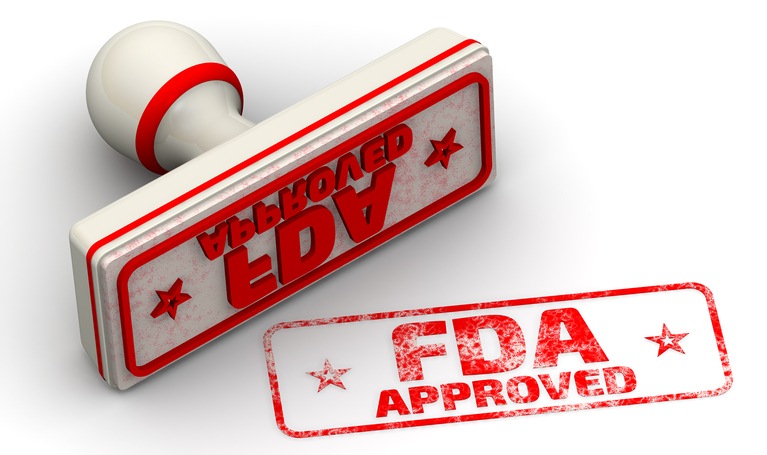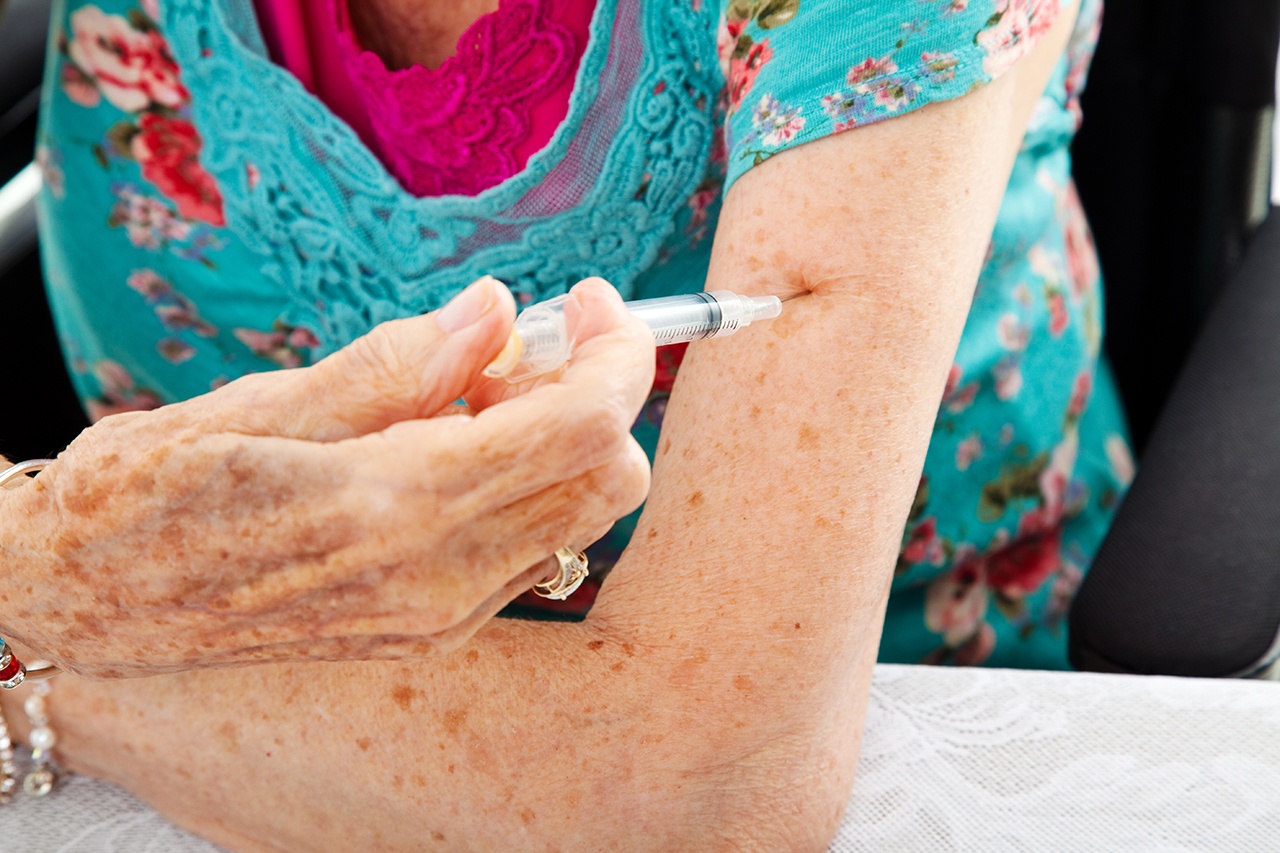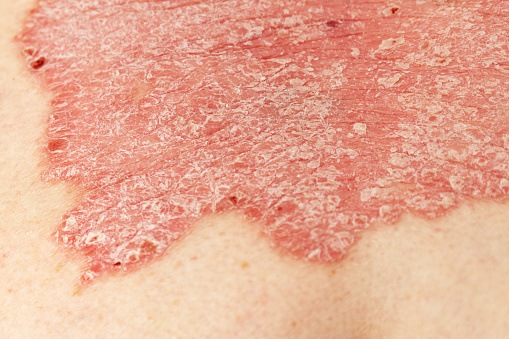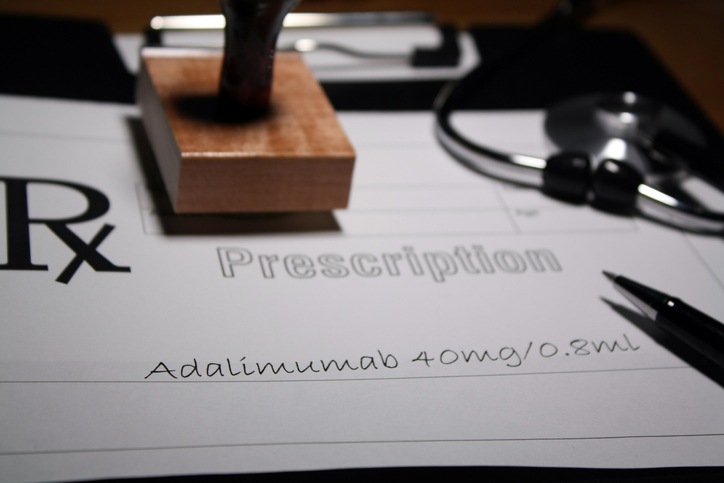
AbbVie’s Risankizumab-rzaa (SKYRIZI) has received approval from the Food and Drug Administration (FDA) in the treatment of moderate-to-severe plaque psoriasis. The interleukin-23 antagonist is indicated for adult patients who are candidates for systemic therapy or phototherapy; it is administered via two 75 mg injections at Week 0 and Week 4, and then every 12 weeks.
The drug will be marketed under the name SKYRIZI and manufactured by AbbVie.
“The approval of SKYRIZI is an important advance in the treatment of adults with plaque psoriasis who are seeking high levels of durable skin clearance that can be maintained over time,” said Michael Severino, MD, vice chairman and president of AbbVie, in a press release. “SKYRIZI builds on AbbVie’s legacy in immunology, expanding our portfolio to help meet the evolving needs in psoriatic disease and reinforcing our continued pursuit of innovations that improve care for people living with immune-mediated conditions.”
Pretty impressive profile…High efficacy, high safety, very convenient dosing for Risankizumab-rzaa in plaque psoriasis pic.twitter.com/XOlp2At5IA
— kelvin mogesa (@MogesaKelvin) April 24, 2019
Four Clinical Trials Assess Risankizumab
Risankizumab’s efficacy and safety were evaluated in four clinical trials. The results of UltIMMa-1 and UltIMMa-2, two randomized, double-blind, placebo-controlled and active comparator-controlled trials, were published in The Lancet; they both had the same primary endpoints: patients achieving a 90% improvement in the Psoriasis Area Severity Index (PASI 90) and a static Physician’s Global Assessment (sPGA) score of 0 or 1 at week 16.
In UltIMMa-1, 506 patients randomly received receive 150 mg risankizumab (n = 304), 45 mg or 90 mg ustekinumab (n = 100), or placebo (n = 102). After 16 weeks, most of the risankizumab patients (n = 229, 75.3%) achieved PASI 90, compared to five (4.9%) in the placebo group (placebo-adjusted difference 70.3% [95% CI 64.0–76.7]) and 42 (42%) in the ustekinumab group (ustekinumab-adjusted difference 33.5% [22.7–44.3]; p < 0.0001 vs. placebo and ustekinumab). In the risankizumab group, 16-week sPGA 0 or 1 was achieved by 267 (87.8%) patients, compared to eight (7.8%) of placebo patients (placebo-adjusted difference 79.9% [95% CI 73.5–86.3]) and 63 (63%) ustekinumab patients (ustekinumab-adjusted difference 25.1% [15.2–35.0]; p < 0.0001 vs. placebo and ustekinumab).
https://twitter.com/AbbVieUS/status/1120854897983934464?s=20
UltIMMa-2 included 491 patients who were randomized to receive 150 mg risankizumab (n = 294), 45 mg or 90 mg ustekinumab (n = 99), or placebo (n = 98). A total of 220 (74.8%) risankizumab patients achieved 16-week PASI 90, compared to two (2%) in the placebo cohort (placebo-adjusted difference 72.5% [95% CI 66.8–78.2]) and 47 (47.5%) ustekinumab patients (ustekinumab-adjusted difference 27.6% [16.7–38.5]; p < 0.0001 vs. placebo and ustekinumab); 16-weel sPGA 0 or 1 was achieved by 246 (83.7%) risankizumab patients, five (5.1%) placebo patients (placebo-adjusted difference 78.5% [95% CI 72.4–84.5]), and 61 (61.6%) ustekinumab patients (ustekinumab-adjusted difference 22.3% [12–32.5]; p < 0.0001 vs. placebo and ustekinumab).
“The frequency of treatment-emergent adverse events in UltIMMa-1 and UltIMMa-2 was similar across risankizumab (part A: 151 [49·7%] of 304 and 134 [45·6%] of 294; part B: 182 [61·3%] of 297 and 162 [55·7%] of 291), placebo (part A: 52 [51·0%] of 102 and 45 [45·9%] of 98), ustekinumab (part A: 50 [50·0%] of 100 and 53 [53·5%] of 99; part B: 66 [66·7%] of 99 and 70 [74·5%] of 94), and placebo to risankizumab (part B: 65 [67·0%] of 97 and 61 [64·9%] of 94) treatment groups throughout the study duration,” according to the study.
FDA approves IL-23 inhibitor risankizumab for treating plaque psoriasis https://t.co/Zgr8dg8GM6
— David Lazar, MD MPH (@DrDavidLazar) April 24, 2019
Two additional studies—IMMhance and IMMvent—compared the drug to placebo and adalimumab, respectively.
According to the FDA label, the most common adverse reactions are upper respiratory infections, fatigue, injection site reactions, and tinea infections.







 © 2025 Mashup Media, LLC, a Formedics Property. All Rights Reserved.
© 2025 Mashup Media, LLC, a Formedics Property. All Rights Reserved.